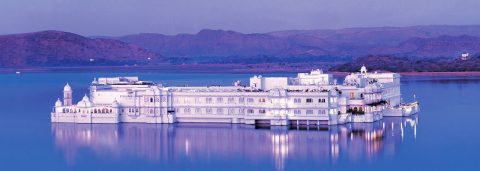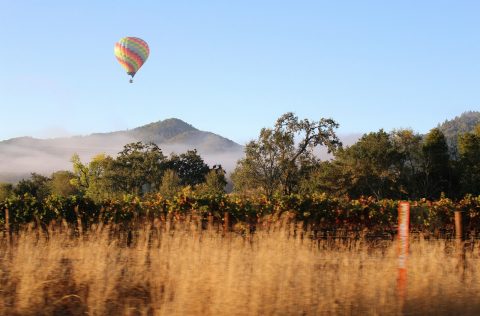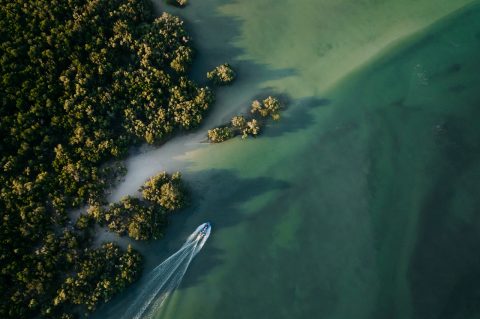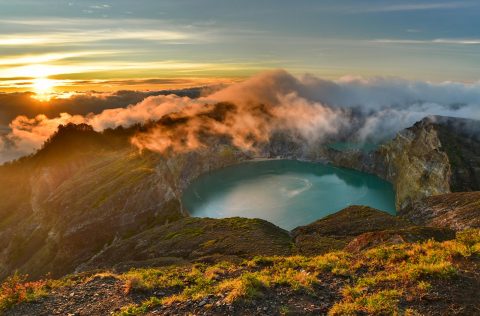14 Surprising Places You Can Only Find in India
Famed for its vibrance, culture and history, India is vast. Geographically, it’s enormous. Topographically, it has it all: beaches, alps, plains of prairies and jungles – with a scatter of ancient cities spread throughout. Here are some of India’s most surprising wonders, from heaven-grazing peaks to flower-studded fields.
Image credit: Alamy
Ladakh, Jammu and Kashmir
1/15Known as the Land of High Passes, India’s northern region of Ladakh, is characterised by towering granite peaks with an average elevation of over 3000 metres above sea level. This is mountaineering territory – challenging trails wind over craggy peaks and trace deep valleys, with stunning scenery guiding every footstep. At the summit of many of these alps you’ll find squatting gompas (Tibetan Buddhist monasteries) quietly overseeing the plunging gorge scars below.
Nanda Devi Biosphere Reserve, Uttarakhand
2/15There are only two biosphere reserves in India and Nanda Devi, near the south-west Chinese border, is one of them. The UNESCO World Heritage area is a treasure trove of natural beauty, with alpine meadows, dense forests and sinuous trekking paths skimming a glacial basin. The reserve’s wildlife is also a highlight, with fascinating fauna spanning snow leopards, Himalayan brown bears and the imposingly-horned blue sheep, or bharal.
Image credit: Alamy
Andaman and Nicobar Islands
3/15No, this isn’t the Maldives. But, for all the classic, deserted island beauty found in the Andaman and Nicobar Islands – 1300 kilometres off India’s south-eastern coast in the Bay of Bengal – it may as well be. There are over 300 islands (less than 40 inhabited) in the archipelago offering countless mangroves, coral reefs, tangles of tropical rainforests and pristine stretches of sand to explore.
Khajjiar, Himachal Pradesh
4/15The alpine forests of Khajjiar, near the Pakistani border, are as green and lush as those you’d find in Europe. In fact, the landscapes of this area around 6500 metres above sea level are so similar to central Europe, it’s been dubbed ‘mini Switzerland’. Nature isn’t the only thing to marvel at, however: some temples and structures here have been standing since the 12th century, including Khajji Nag Temple, built to honour the serpent god of Nag Devta.
Chandra Taal, Himachal Pradesh
5/15Blindingly blue and strikingly remote, Chandra Taal (or ‘Moon Lake’) is nestled in the foothills of the Himalayas, reachable by mountain passes (Rohtang and Kunjum) for just three months of the year. Camping is popular here, when the lake is free-flowing and shifting colour in step with the sky and the banks of the Chandra Bhaga mountain ranges are blanketed in hospitable grasses.
Image credit: Alamy
Goa
6/15Choose your own adventure on the shores of Goa, a southern Indian state where beautiful beaches are easy to come by. Looking out to the Arabian Sea, there’s every kind of shoreline here: party beaches, lava rock-lined beaches, dolphin-spotting beaches and even secret coves where marine critters from sea cucumber to urchins wash up on the edges. With temperatures rarely tipping below 25°C, even in winter, this is a year-round paradise.
Image credit: Alamy
Lotus Temple, New Delhi
7/15Although India’s ancient wonders are countless, there are plenty of modern stunners, too. The structure of this Bahá'í temple of worship in New Delhi is based on a lotus flower, its petals unfurling to the sun above. Although the building is of particular significance to those of Bahá'í faith, the temple is open to all for prayer, meditation and contemplation, or, to those who wish to admire its unique architectural beauty.
Image credit: Alamy
Ajanta Caves, Maharashtra
8/15There are no fewer than 30 caves – with some doubling as monasteries or sanctuaries – intricately carved into the granite cliffs near the village of Ajanta in the heart of India. It’s a beguiling glimpse into the Hinayana/Theravadin Buddhist community: the multi-century construction project began as far back as the 2nd century BC. Not only were rock-hewn doors, stairs, internal shrines and facades carefully sculpted, they were also adorned with extensive and colourful murals; the remains of which some can still be glimpsed today.
Image credit: Alamy
Chand Baori, Rajasthan
9/15Yes, Rajasthan has many architectural treasures (the pink presence of Hawa Mahal or the celestial blue of Jodhpur, for example) but are you familiar with Chand Baori, a 20-metre-deep well? The precise, repetitious pattern of the 3500 descending steps is a harmonious example of careful geometry; an impressive feat considering it was constructed over a thousand years ago.
Image credit: Alamy
Sun Temple, Odisha
10/15It’s fitting that the Sun Temple of Konârak dedicated to Surya, the sun god, is bathed in its rays. This elaborate structure has stood on the shores of the country’s eastern edge since the 13th century, the staggering result of more than 12 years of work and the hands of 1200 builders. Its most distinctive feature is the depiction of the 24 wheels of Surya’s chariot, a representation of the ever-moving cycle of the seasons.
Image credit: Alamy
Valley of Flowers, Uttarakhand
11/15The Valley of Flowers National Park at the northern tip of the country there is an endless carpet of blooms that ignite the plains in vivid, lurid colour during spring. Here, at 3600 metres above sea level, there are beauties rarely glimpsed outside of the reaches of West Himalaya, namely the stately purple Himalayan monkshood. Countless clusters of poppies, marigolds and orchids also flower here, especially in the peak seasons of flowering between July to mid-August.
Munnar, Kerala
12/15Munnar, meaning three rivers in Malayalam (the official language of Kerala), lies at the intersection of three water channels – the Muthirapuzha, Nallathanni and Kundala rivers – and its surrounding landscape is stunningly verdant as a result. Tumbles of waxy, emerald-coloured tea leaf plantations cover this province in the country’s southern tip, as do lush forests and grand colonial buildings – a legacy from British rule. A visit to the area’s tea museum is a must. Hire a bicycle and take the scenic route through pathways ringed by foliage the colour of an effervescent shamrock.
Image credit: Alamy
Dzukou Valley, Nagaland
13/15The pucked green earth of India’s north-eastern valley of Dzukou looks like it's straight from a science fiction film. There are careful efforts made to ensure visitors to the area don’t disturb the pristine valley, which springs to life during summer when the lack of trees is undetectable thanks to the abundant flowers and foliage that seem to proliferate in the heat. Hiking is a popular, though strenuous, activity here, with a nine-kilometre walk over the rolling terrain the area’s most favoured.
Image credit: Alamy
Lakshadweep Islands, Kerala
14/15Kerala is India’s sleepy state, where you’re never far from the peaceful pull of calm, flowing waters. Due west off its coast are the idyllic Lakshadweep Islands, a 36-island set bursting with scuba diving, snorkelling and hammock-dwelling opportunities, all amid the Elysian setting of icing sugar sands and palm trees.















